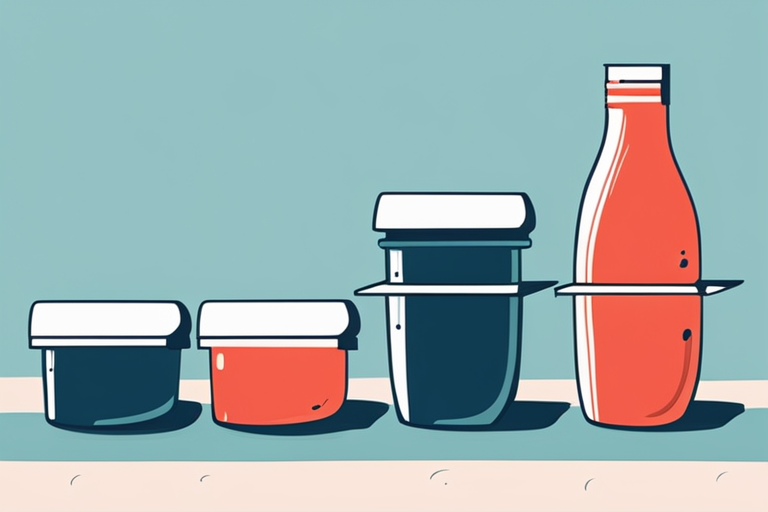
Understanding the Taste of Expired Cream Cheese
Get Your Free Food Safety Cheat Sheet
30 most common foods with instant answers. Print it and stick it on your fridge—completely free!
Understanding the Taste of Expired Cream Cheese
Cream cheese is a versatile and creamy dairy product that adds richness and flavor to a wide range of dishes. Whether spread on a bagel, used in baking, or as a dip for fruits and veggies, cream cheese is a popular ingredient in many kitchens. However, like all perishable foods, cream cheese can spoil over time. In this blog post, we will delve into what expired cream cheese tastes like, how to identify it, and important food safety tips to keep in mind.
What Causes Cream Cheese to Expire?
Cream cheese is a dairy product made from a mixture of cream and milk. It has a high moisture content, making it susceptible to bacterial growth if not stored properly. Several factors can contribute to the expiration of cream cheese, including:
-
Temperature: Cream cheese should be stored in the refrigerator at a temperature below 40°F (4°C) to prevent bacterial growth and spoilage.
-
Exposure to Air: When cream cheese is exposed to air for an extended period, it can lead to drying out and the growth of mold and bacteria.
-
Cross-Contamination: If cream cheese comes into contact with other contaminated foods, it can spoil more quickly.
Signs of Expired Cream Cheese
When cream cheese goes bad, it is important to be able to identify the signs of spoilage. Here are some indicators that your cream cheese may have expired:
Visual Signs
- Mold growth on the surface
- Changes in color, such as yellowing or browning
- Unpleasant odor or off-smell
Texture
- Dry, crusty, or grainy texture
- Separation of liquid from the cream cheese
Taste
- Sour or tangy flavor
- Bitter taste
- Spoiled or rancid taste
What Does Expired Cream Cheese Taste Like?
When cream cheese has expired, it undergoes chemical changes that affect its taste and texture. Here are some common descriptions of what expired cream cheese tastes like:
-
Sourness: Expired cream cheese often develops a sour taste due to the presence of lactic acid bacteria, which multiply as the cream cheese spoils.
-
Bitterness: As cream cheese ages and bacteria break down the fats and proteins, it can develop a bitter or off-flavor.
-
Rancidity: When cream cheese goes rancid, it can have a sharp, unpleasant taste and smell due to the oxidation of fats.
-
Spoiled Taste: Overall, expired cream cheese will have a noticeable difference in taste from fresh cream cheese, with a generally unpleasant and off-putting flavor.
Safety Tips for Handling and Storing Cream Cheese
To prevent your cream cheese from expiring prematurely and ensure food safety, here are some practical tips for handling and storing cream cheese:
-
Refrigeration: Always store cream cheese in the refrigerator at a consistent temperature of 40°F (4°C) or below.
-
Seal Properly: Keep cream cheese tightly sealed in its original packaging or an airtight container to prevent exposure to air and potential contamination.
-
Check Expiration Date: Be mindful of the expiration date on the packaging and consume the cream cheese before it expires.
-
Avoid Cross-Contamination: Store cream cheese away from raw meats and other potentially contaminated foods to prevent cross-contamination.
-
Use Clean Utensils: When scooping out cream cheese, use clean utensils to avoid introducing bacteria into the container.
Conclusion
In conclusion, understanding the taste of expired cream cheese is crucial for maintaining food safety in your kitchen. By being able to identify the signs of spoilage and knowing what expired cream cheese tastes like, you can prevent consuming potentially harmful food. Remember to store cream cheese properly, check for visual and sensory signs of spoilage, and follow safe handling practices to enjoy your cream cheese safely and deliciously.
Next time you reach for that tub of cream cheese, remember to keep an eye out for any signs of expiration. Your taste buds and your stomach will thank you for it!

Authoritative Food Safety References
These agencies and university labs inform every tip and health precaution we publish.
USDA FoodKeeper – Cold Storage Guidelines
Official refrigerator, freezer, and pantry timelines maintained by the U.S. Department of Agriculture.
Visit USDA FoodKeeperFDA Produce Safety Rule & Grower Guidance
Field-to-fridge handling practices that prevent contamination of fruits, vegetables, and leafy greens.
Visit FDA Produce SafetyCDC Foodborne Illness Prevention Hub
Surveillance-backed guidance on pathogens, symptoms, and steps to reduce foodborne illness risk.
Visit CDC Food SafetyUC Davis Postharvest Technology Center
University research detailing optimal storage atmospheres for produce after harvest.
Visit UC Davis PostharvestPenn State Extension – Home Food Preservation & Safety
Peer-reviewed extension bulletins on safe canning, chilling, and reheating practices.
Visit Penn State ExtensionHow can you tell if cream cheese has gone bad?
What happens if you eat expired cream cheese?
How long does cream cheese last in the fridge?
Can you freeze cream cheese to extend its shelf life?
Get Your Free Food Safety Cheat Sheet
30 most common foods with instant answers. Print it and stick it on your fridge—completely free! Want more? Upgrade to the complete guide with 70+ foods.
Scan your food directly and get instant safety info using our AI-powered camera feature.